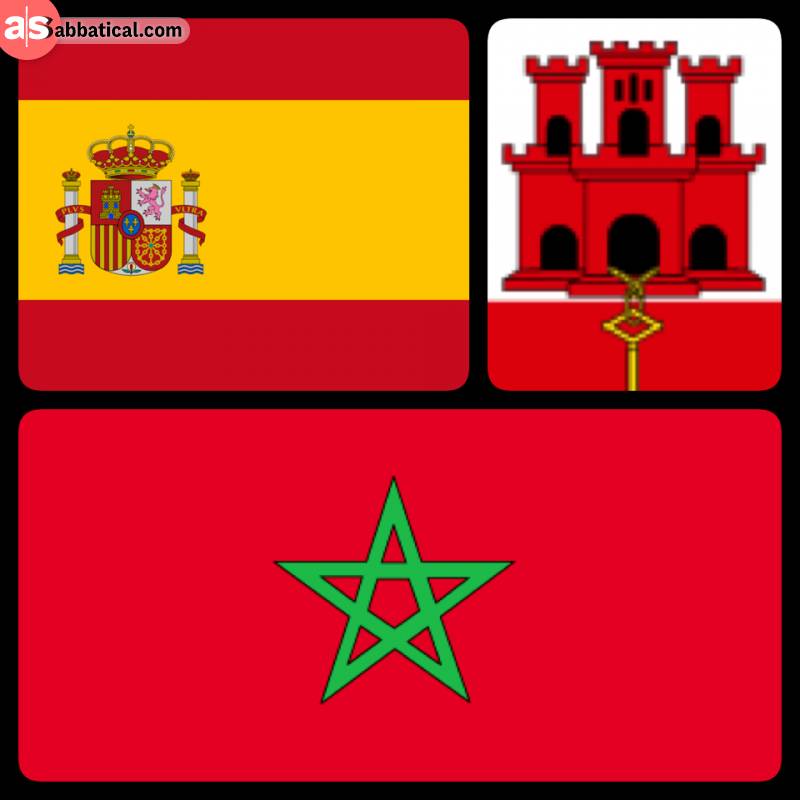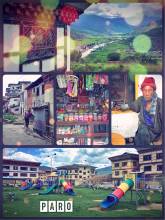Berber Safari through Morocco
One month after returning home from Africa , a friend knocked on my Messenger and asked me to go on a Berber Safari through Morocco
, a friend knocked on my Messenger and asked me to go on a Berber Safari through Morocco together. Of course, you don’t have to ask me something like this twice! It was only a pity, that I could not drive by car from southern Africa
together. Of course, you don’t have to ask me something like this twice! It was only a pity, that I could not drive by car from southern Africa to northern Africa
to northern Africa . For me, that would have been the most amazing thing to start a new year of travel. Instead, I booked a one-way flight from my home and met my friend in Marrakech. From there we started a trip through the country and even beyond. The only planned objective was meeting some indigenous Berber tribes in the Atlas mountains. Everything else was up for decision on the go.
. For me, that would have been the most amazing thing to start a new year of travel. Instead, I booked a one-way flight from my home and met my friend in Marrakech. From there we started a trip through the country and even beyond. The only planned objective was meeting some indigenous Berber tribes in the Atlas mountains. Everything else was up for decision on the go.
Arriving in Marrakech and diving into the medina
Marrakech completely sucked us in from the very first moment. For the first two days, we stayed in the medina, the old town center, surrounded by city walls. This area is famous for narrow alleyways with surprising angles and dead ends. Without a map, a clear path or destination, it is very easy to get lost. In fact, getting lost while strolling through the medina, is one of the most interesting things to do in Morocco without worrying. The city is safe and if necessary, there is always a knowledgeable local guide to bring you to your destination. And they go even further, friendly talking you into a quick tour along shops and markets. They behave extremely kind, are patient and invite you into their culture. However, most of them only have one objective in mind, making a deal with you. Just make sure to settle on a reward, in the beginning, otherwise, they can get quite nasty. Especially in the touristy medina of Marrakech, you can get ripped off easily. Half of the city, we did explore on our own, the other half we entrusted a local guide. The heart of Marrakech is a seemingly endless crafts market, where young to old Berber manufacture and sell local specialties. A paradise for souvenir shopping but hell if you don’t want to spend a dime!
Crossing the Atlas mountains and Berber villages
In Marrakesh, we have already met a dozen of Berber but the real Berber Safari began when we left the big city. First, we headed into the higher mountains to one of the few ski resorts on the African continent. Half way, the weather was so bad, that we decided to turn around and continue into the other direction. Our path lead over the Tizi N'Tichka mountain pass, where we met an endless armada of Renault oldtimer, probably returning from a raley. One of the best decision was, to leave the main road and heading towards Telouet and then continue towards Aït Ben Haddou. Both cities are extraordinary remnants of the fading berber culture, once being important trading outposts for thriving caravans across the Sahara and Atlas. Similar to the European castles, they have built many beautiful Kasbahs. They ranged from a standalone building to entire fortified townships, mostly located on a hill to overlook the surroundings. The further South we travelled, the warmer and more deserted it got.
Riding on a camel through the desert - or parts of it
The South of the Atlas mountain range is defined by an arid flat landscape with a few rocks rising out of nowhere. This area already belongs to the vast Sahara desert but in reality is only just the tip of the iceberg. Most of the land bordering Algeria is dry wasteland instead of a sandy desert. This region surprisingly bares many remnants of a prehistoric ocean. In a small roadside shop, we found everything from fossilized trilobites and seashells to allegedly real dinosaur teeth. Only just the last string of land before Algeria is covered with reddish sand and high dunes. Like many tourists, we found our way to Merzouga, where local berber guide you on a camel across the dunes. The ride itself is quite impressive but after an hour you already reach the fix installed camp at the other end of the sand dunes. I found this disappointing for two reasons: it was far from the impression of an endless Sahara desert and the nearby border to Algeria was locked down for everybody. This experience was quite a staged adventure.
Getting lost in the imperial cities of Fes and Meknes
Far more impressive was the northbound drive across the Atlas towards the two imperial cities of Fes and Meknes. With a joint effort and literally our last energy, we covered nearly 500 km in a single day, arriving in Meknes long after sunset. This was a deliberate decision to have more time in the North but still a pity as we missed the lovely National Park of Ifrane and Azrou. The northern end of the Atlas is home to a series of impressive cities. Volubilis is an impressively well preserved roman city from where you can see the holy city of Moulay Idriss Zerhoun, where the Islam reached Morocco in 789. Also just within an hour of drive lie the two cities of Meknes and Fes. The latter is way older and famous for its spiritual importance and home of the oldest university in the world. Its inhabitants emit a certain pride in their heritage and traditions. They mind their own business within their own world and are only hospitable on the second glance. Meknes is slightly different, home to many berber people and thus more inviting to foreigners. This was a perfect finale for our berber safari. Both city centres embody a phantastic medina with endless narrow alleys, spiked with small shops. Being less focused on mass tourism, I have enjoyed both cities more than Marrakech.
Crossing the wild strait of Gibraltar in a nutshell
in a nutshell
The last part of this journey brought me to Chefchaouen, the blue city. Like the Greek Santorini, the entire city is painted in a combination of white and blue, making it an extraordinary place to walk and look around. As always, we had some fun with local vendors. This time, we guarded a souvenir shop while its shopkeeper attended prayer in the mosque next door. In the evening, we had our last Moroccan dinner, tasty chicken couscous cooked in a ceramic Tajine. On the next day, we embarked a ferry in Tangier and crossed the stormy strait of Gibraltar. Arriving on the other side, we first explored the small country of Gibraltar, which is part of the United Kingdom. This was yet another culture shock after being in northern Africa, arriving in a culture of pubs and pounds. People here are quite rough and tend to isolate themselves, one bartender never left this tiny country! My last etappe before returning home brought me via Ronda to Málaga. Both destinations are perfect to indulge in the Spanish culture, enjoying tapas and other delicacies.
Thanks to my dear friend who took me on an unforgettable Berber Safari through Morocco.




